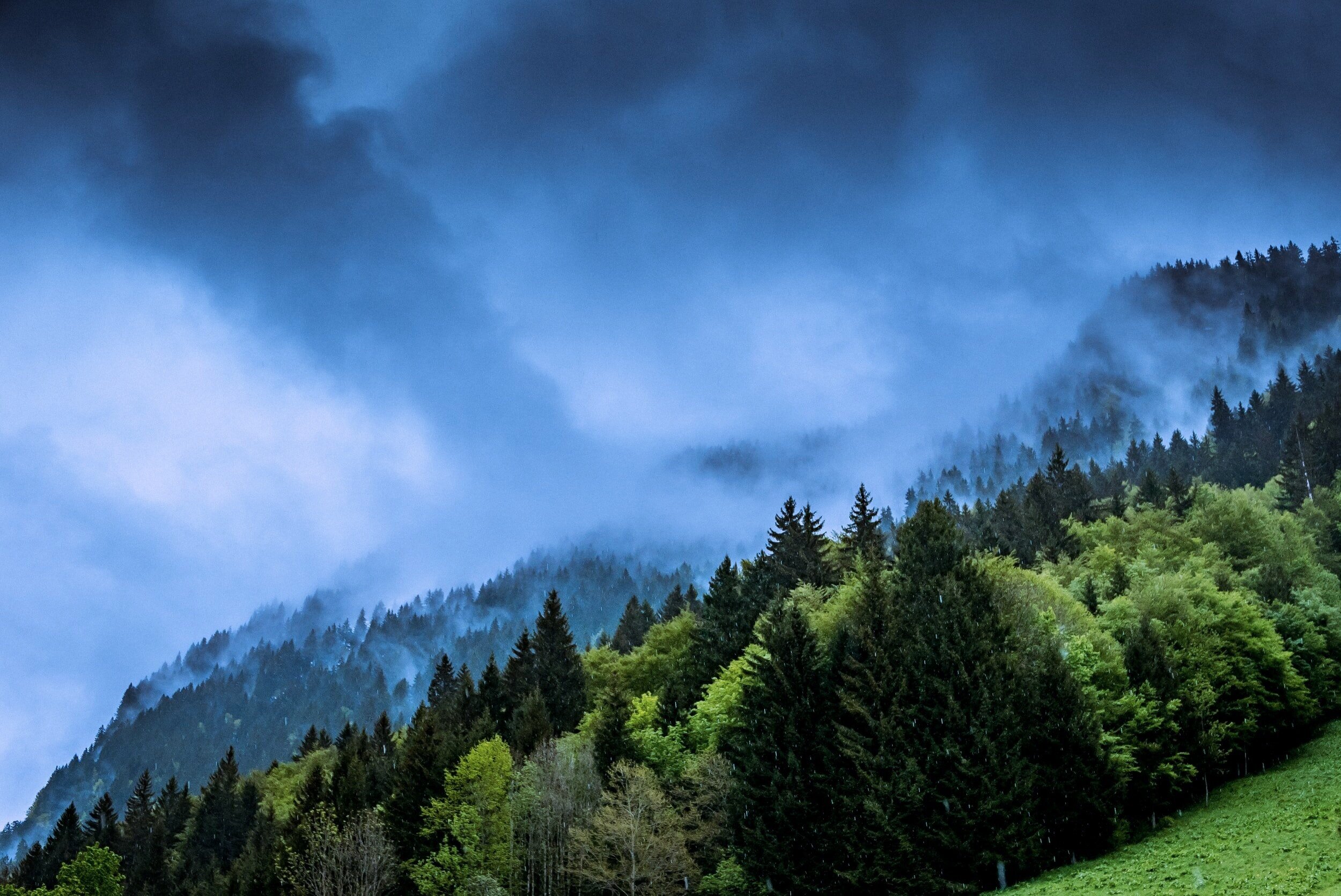
To change climate change, we need to change carbon

Our Mission
We’re changing climate change with personalized carbon offsets — so that everyone can have an impact. Plus, we’re entirely run by youth: the generation most impacted.


Our Beliefs →
No matter who you are, where you live, or how much money you make, you can make a difference. Your CO2 Footprint is unique, so we designed a personalized survey that you can use to make an offset you believe in. It shouldn't be so hard to fight for our future.

Our Team →
We are a community, with a passion of changing the world. We’re a group of kids that are all helping. Together, we write, film, research, and teach to combat climate change.

Carbon Is Everywhere. Carbon Is Rising. Carbon Is The Face Of Climate Change.
💡 Reduce Your CO2
The conversation around climate change in the United States mainly revolves around its direct effects on U.S. cities and territory or its impact on the planet overall. It rarely focuses on the specific effects climate change will have on other parts of the world that will also be highly relevant to the United States. In an increasingly globalized world, no country will be immune to the consequences of climate change even if they play out on the other side of the world.
Umbrellas keep us dry, but at a high cost. Over 1.1 billion umbrellas make it to the landfill every year. In fact, the number of carelessly discarded umbrellas could make a tower 25 times as high as the Eiffel Tower. An organization making sea-plastic recycled umbrellas is changing the story. This article is part of a new Light CO2 series, where we explore how individuals and organizations alike are changing climate change. Everyone can change climate change.
Neonicotinoids are a class of neuroactive insecticides chemically similar to nicotine. They assist with pest control on more than 140 crop varieties. Sounds beneficial, right? At first glance, neonicotinoids seem like the right answer to gain a higher crop yield and manage food shortages. Take another look, and neonicotinoids could devastate nature. In parts of Europe, governments know the detrimental harm neonicotinoids have on wildlife yet still permit widespread usage across the country.
Cozy, toasty, warm. Heating helps us enjoy our time in the winter, warm our water, and even wash our dishes and clothing. Unfortunately, this comfort comes at a cost. Furnaces and heaters have a huge carbon footprint; almost all are fossil fuel-powered. Even space heaters use electricity likely generated from fossil fuels. Let’s glance at the history of warmth, it’s environmental impact, and heating alternatives, as well as reduce greenhouse gases.
2020 has been a crazy year. Australia and California nearly burned to the ground, the UK withdrew from the European Union, and elections are just around the corner. Oh, and massive protests across the world have been demanding racial justice while a pandemic rages. At the same time, tremendous strides have been made in technology, astronomy, and science. One of the significant changes beginning in 2020 is the rapid implementation of 5G technology.
Did you recently eat an apple, drink coffee, or wine? Thank the bees. Without bees, ⅓ of the world food wouldn't exist and ½ the world's oil, fiber, and raw materials wouldn't survive. We can also thank them for medicine, clean water, and oxygen. Every year, these little pollinators contribute over $217 billion to the global economy. Yet we are not treating these creatures with the same care they're treating us with. The bees need our help.
Our world is drowning in plastic. Yet this material has never been needed more. It all started in 1907, the beginning of the global plastic market with Bakelite, the first plastic. Now plastic is in every corner of the globe, from the coasts of California, the streets of your city, and even deep in the Amazon. So what is plastic? What makes it so harmful to the environment? And what can you do to end plastic pollution and save some sea turtles?
Wildfires are increasing. In the past ten years, there have been 641,000 recorded wildfires, and 68 million acres burned in the United Sates. California seems to catch fire every month, and Australia nearly burned to the ground a few months ago. While we usually perceive climate change as contributing to hurricanes, it has also been linked to droughts. What’s climate change’s role in droughts? Why do droughts cause fires? And what can you do?
"Less is More" is the mantra we've heard echoed across social media by influencers and journalists. Minimalism is the new trend, and it's quite a good one. It has sparked multiple movements, including reducing the impact of fast fashion, promoting waste reduction, and reducing consumerism. These movements might be the turning stone we need to save the planet. Make minimalism a trend that lasts — from trends like 33 clothes, 100 things, and zero waste.
Every year, 2.4 million tonnes of electronics go into landfills in the US alone. It results in an astounding 860 million tons of greenhouse gas emissions, or 2% of world carbon emissions. We are becoming a disposable society. Millions of Americans upgrade to the newest smartphones when their current phone works just fine. The waste piles up, while rare materials are extracted from the Earth. How can we reduce our technology's environmental impact?
Soap is critical for maintaining proper hygiene, health, and cleanliness. Now it’s even more critical during the COVID-19 pandemic. But many have raised concerns about the environmental impact of soap. So should you be worried? Take a look at the Yamuna river in India, and see how soap is genuinely affecting the environment. Soap can cause irreparable damage from marine ecosystems to promoting antibiotic-resistant organisms and even our skin.
Light is everywhere. More than 80% of the world now lives under an artificially illuminated sky, making our neighborhoods visible and homes cozy when the sun goes down, keeping us safe in the dark, and enabling us to travel and work more than ever. But too much of this gift can cause detrimental effects to our sleep, wildlife, and the environment. That's what light pollution is: the excessive or inappropriate use of artificial light. The world is glowing.
You likely consume 167 bottles of water each year. One hundred of those are thrown away into the environment like there is no tomorrow. For each of those bottles, an immensely long, intricate, and carbon-intensive process takes place from beginning to end. It uses 17 Million Barrels of Oil, 2.5 Million Tonnes of CO2, 16.4 Billion Gallons of Water, and so much more to hold a small amount of water. This is the journey of three plastic bottles.
Our pets have a massive pawprint. Dogs and cats consume approximately 25% of the worldwide meat supply, which results in dangerous greenhouse gases, contaminated water, and inefficient use of land. We hardly think about the small things, but they can often have the most significant impact. There are a few actions that you can take to cut down on your pet's environmental impact. It starts with a conscious diet, eco-friendly food, and lots of care. Live a light life.
Your cute and furry companions have an impact on the planet. Yet, their exact role in climate change remains to be determined. We've set out on a journey to research what has been reported on dogs and cats' precise carbon pawprint. Last year, across U.S. or world households, there were 471 Million Dogs and 373 Million Cats. They contribute approximately 1.7 billion tonnes of carbon dioxide to our environment yearly or the equivalent of running 437 coal power plants for a year.
Your cute and furry companions have an impact on the planet. Yet, their exact role in climate change remains to be determined. We've set out on a journey to research what has been reported on dogs and cats' precise carbon pawprint. Last year, across U.S. or world households, there were 471 Million Dogs and 373 Million Cats. They contribute approximately 1.7 billion tonnes of carbon dioxide to our environment yearly or the equivalent of running 437 coal power plants for a year.
Humans have never been this separated from nature. Green grasslands turned to grey concrete, tall trees replaced by tall buildings, and each animal to a plastic memory. We do not live with nature. We live over her. But we can reconnect back to earth by incorporating elements of nature into our homes. We can take a few simple steps to make our house feels like home from indoor plants, eco-friendly furniture, and natural light. Let's get back to home.
With COVID-19 leaving its mark across the world, we've created new routines. One of the many is regular cleaning. While cleaning can help to remove dust, allergens, and infectious agents, it can bring damage to the environment and animals. Many cleaning products release CFCs, VOCs, and other harmful chemicals. Plus, commercial cleaning products are hazardous for the eye, skin, and respiratory tract. Here are ten great DIY staples you need for an eco-friendly cleaning regimen - and what to avoid.
Earthquakes are an increasingly common occurrence in many countries. When a big earthquake hits, it can be devastating, leveling entire cities and taking human lives. Yesterday, a magnitude six earthquake struck central California. Its tremors were felt from L.A. to Las Vegas. Over 200 aftershocks were recorded, and six lives were lost. So what is going on when the ground starts shaking beneath our feet? And how does climate change play a role in this? The answer is quite deep.
Even though the slow fashion movement of ethically and sustainably made clothing has been gaining traction over the past few years, not everyone can afford $75 leggings crafted from recycled plastic water bottles. As more and more people have learned about the fashion industry's adverse effects on our climate change, they have been frantically searching for alternatives. That’s where thrifting comes into play. Let's examine where this thrifting trend started, how it benefits your wallet, and if it is better for the Earth.
It can be hard to book a campsite, pack your gear, and venture out, whether for a one-nighter or an extended trip, but it's worth it. Camping connects. Each night you're under the stars with your family and friends; you can disconnect from society and reconnect with nature, your people, and even yourself. We have never been so separated from nature, but camping can help us observe our wold. Camping reminds you of the things right in front of you.
The COVID-19 pandemic has sparked a new trend - COVID Camping. RV sales and rentals are booming, as Americans look for safe ways to get away during the epidemic and maintain social isolation. Forty-six million Americans plan to take an RV trip this summer. But is camping better for the environment? Let's explore the differences between tent and trailer, the statistics on consumption reduction, and how you can reduce your camping footprint. Happy camping!
Every year, Americans generate 254 million tonnes of trash. Out of that, 40 million tonnes is food. Or about 40% of all the food that we produce. Every household, restaurant, and business must work on reducing food waste. Then, any wasted food should be composted. What is composting? How does composting work? And how can it help mitigate climate change? Composting is just like nature. Inevitably, food will be wasted. But we need to make sure the food does not go to waste.
Shopping for clothes used to be infrequent. Since the industrial revolution, clothes have flooded the market at the price of spare change, trends transformed at faster rates, and shopping sprees became a large part of our culture. But through all this consumption, we forget that wearing our cheap, fashionable attire a few times, before discarding and moving on to a new trend incurs a significant toll on people, animals, and our environment. Fast fashion is not free.
There are a lot of different ways to support your local parks! With increasing infrastructure, we must ensure nature is protected. These areas have been preserved to protect nature and connect with nature. Keep our parks safe is one of the best ways you can help the greater issue of environmental connection. It can even bring greater awareness to things like climate change. Here is a list of ten things you can do to help your parks thrive:
On the main island of Singapore, which is 26 miles wide and 14 miles long, a four-story rotating greenhouse produces one ton of food a day. Incorporating this unique method of farming helped Singapore cut down on 93% of imported food. Vertical farming is the future. It’s better for Earth, better for you (and the 2 billion more people in 2050), and better for the plants. Today, let’s explore what vertical farming is, how it stacks up to conventional farms and the future of agriculture.
You've probably heard the word permaculture thrown around. Maybe a diner party or an eager friend who recently took a permaculture course. So what is permaculture, how does it work, and how can you do it? Bill Mollison, an Australian researcher who first coined the term in 1978, defined "permaculture" as, "The conscious design and maintenance of agriculturally productive systems which have the diversity, stability, and resilience of natural ecosystems. It is the harmonious integration of the landscape with people."
Stop the planet from warming 2˚C, or else. We've heard this phrase echoed by activists, governments, and the news. Where did this target originate? What will happen if we exceed it? And is it realistic? Scott Barrett and Anders Levermann share their climate change research to address these questions. If we have a shared target, then organizations and governments can work together to reach it. We must not freeze in this stark future. We need action. Your action.
A few days ago, Cyclone Amphan, a Category 5 cyclone ravished India, Bangladesh, Odisha, Sri Lanka, and Bhutan. These areas were already dealing with the widespread COVID-19 pandemic, with over 100,000 cases and thousands of deaths. The cyclone illustrates the broader picture of worsening natural disasters resulting from increasing global temperatures. These storms used to be rare, but now with increasing temperatures across all parts of the ocean, storms are increasing in severity and duration. Climate change isn't just rising temperatures.





























